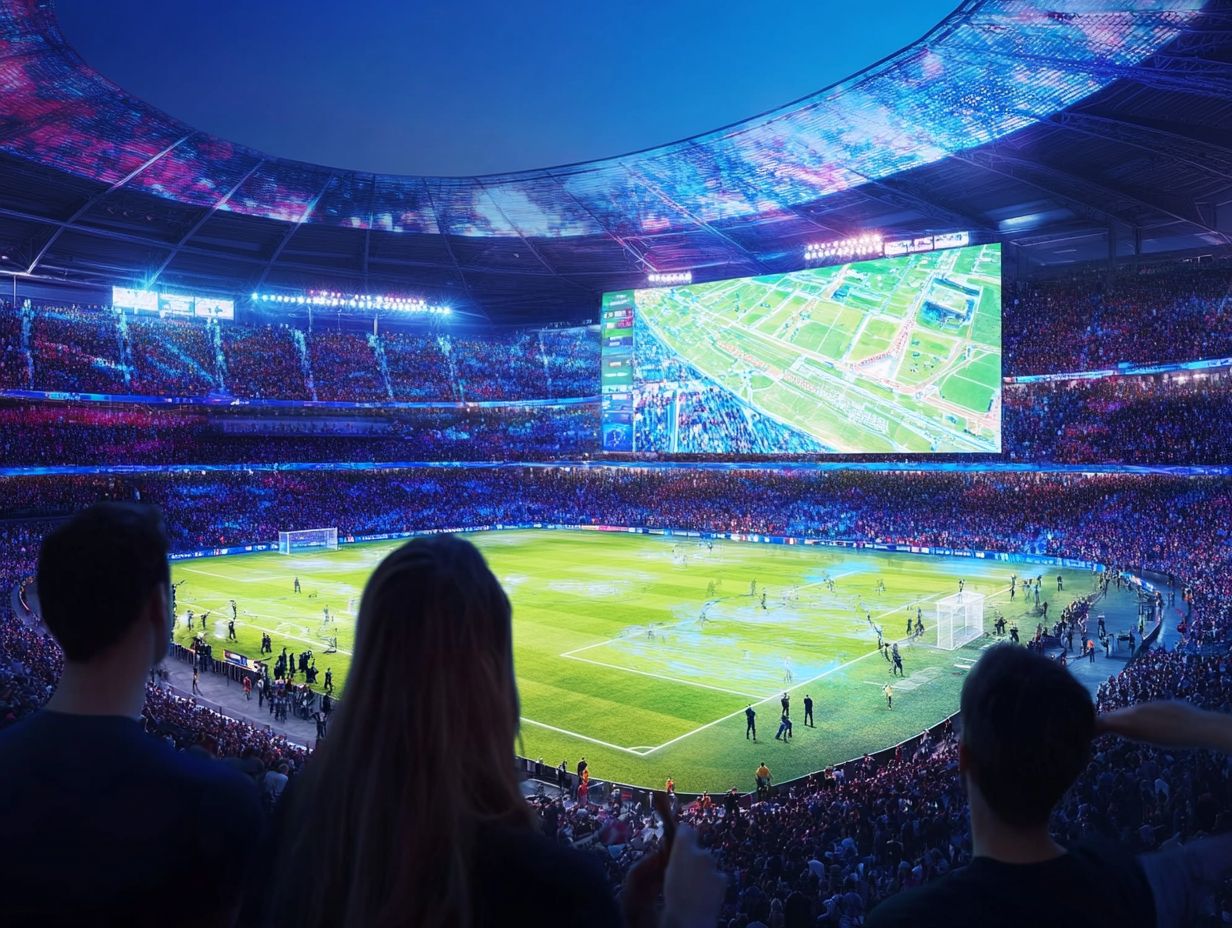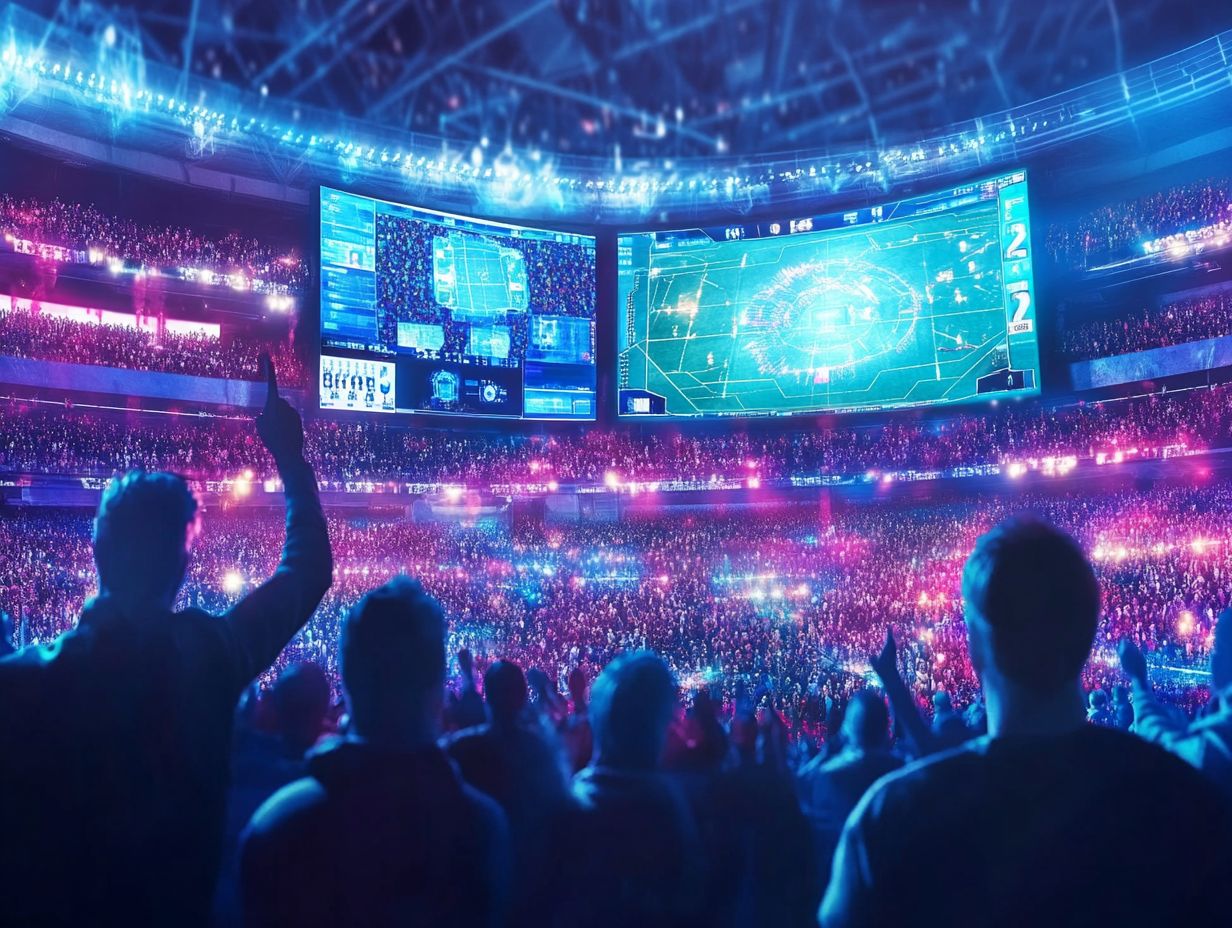The role of location data in sports is expanding as organizations strive to enhance fan experiences. Stadiums are utilizing location data to improve personalized engagement, facilitate services, and enhance security. This includes advancements in concessions and merchandise sales, while also addressing privacy concerns. Below are some of the ways in which location data is influencing the stadium experience.
The Importance of Location Data in Stadiums

Location data is essential for enhancing the experience of fans at stadiums, enabling improved audience engagement and personalized services that cater to individual preferences through mobile applications and interactive features.
Stadium operators can leverage data analytics to gain insights into visitor behavior, optimize event planning, and create immersive entertainment experiences for fans by using personalized services and real-time information.
As technology has advanced, the integration of real-time tracking and geolocation data has transformed the way fans interact with stadiums, leading to the emergence of smart stadiums equipped with innovative features such as wayfinding solutions and navigation support that enhance convenience and safety.
This rich data environment also supports the development of loyalty programs and targeted marketing strategies using predictive analytics aimed at ensuring fan satisfaction and retention.
Enhancing Fan Experiences and Engagement
To enhance fan experience and engagement in stadiums, various strategies can be implemented, such as utilizing location data, mobile apps, and interactive features to create a personalized atmosphere for visitors, enhancing visitor tracking and event scheduling.
For instance, real-time mobile connectivity can keep fans informed with instant updates on game-related information, statistics, and promotions, ensuring they stay engaged with key moments through digital fan engagement.
Additionally, stadiums can explore augmented reality features that allow fans to delve deeper into the stadium and team history, thereby strengthening their emotional connection and fostering fan loyalty.
Proximity marketing can also be effectively utilized by sending tailored offers or experiences based on a fan’s current location within the stadium, seamlessly blending marketing efforts with enjoyment and enhancing consumer behavior insights.
Collecting and Utilizing Location Data

Collecting and utilizing location data in stadiums requires a systematic approach that integrates various data analytics techniques and tracking technologies to gain valuable insights about visitors, improving audience insights and stakeholder collaboration.
By implementing Internet of Things (IoT) integration, stadium operators can monitor crowd flow, assess visitor preferences, and enhance the overall user experience through effective feedback collection, attendee surveys, and post-event surveys.
Types of Data and How it is Gathered
The types of data collected in stadiums can vary significantly, typically encompassing visitor tracking information, demographic analysis, and real-time metrics that provide insights into audience behavior and enhance data-driven decisions.
With the growth of mobile connectivity, facilities can better understand how fans navigate the venue, including which areas are most popular and the routes that are commonly taken, facilitating better venue optimization and experience personalization.
Additionally, social media integration allows facilities to assess how fans are interacting with and reacting to events, which can inform strategies aimed at enhancing the overall fan experience through enhanced engagement and social engagement.
Digital signage not only serves to inform but also helps gauge engagement by revealing which displays attract the most attention, supporting gamification and interactive experiences.
Amid these tools, organizations must strike a balance between leveraging data analysis to improve experiences and establishing clear guidelines on data privacy that respect user consent and protect fans’ personal information, ensuring customer satisfaction and community engagement.
Examples of How Stadiums are Using Location Data

Stadiums around the world are utilizing location data to optimize events, enhance fan interaction, and improve visitor comfort by leveraging smart technology and venue research.
By employing data analytics, venues can tailor experiences to align with their audience’s demographic and preference profiles, enhancing fan demographics understanding. This customization not only fosters successful sponsorship opportunities but also leads to improved engagement metrics and brand partnerships.
Improving Concessions and Merchandise Sales
Stadiums can enhance concessions and merchandise sales by implementing real-time engagement strategies and utilizing mobile ticketing and cashless payments to expedite the purchasing process, thus enhancing mobile payments and ticketing technology.
These approaches not only accelerate transactions but also significantly improve the overall fan experience, thereby boosting user experience and event logistics.
By employing heat maps to analyze crowd flow, stadiums can identify high-traffic areas and peak times, allowing for the optimal placement of concession stands and merchandise booths. This data can also inform targeted marketing campaigns, enabling teams to communicate food and merchandise deals directly to fans through their mobile apps, enhancing queue management and customer journey insights.
By increasing convenience and responding to fan behaviors, venues can foster a more enjoyable atmosphere that encourages greater spending and enhances fan loyalty and customer insights.
Enhancing Safety and Security Measures

Enhancing safety and security in stadiums necessitates the implementation of robust safety protocols, effective crowd management, and advanced visitor tracking technologies. To ensure a safe experience, venues should incorporate real-time updates that aid in crowd management, allowing authorities to respond quickly to any issues that may arise through efficient access control and event security measures.
A strong connectivity infrastructure is essential to support surveillance systems and emergency communication, thereby strengthening overall security. Obtaining user consent for data collection is crucial for building trust with users and ensuring that the information gathered can be used appropriately to improve safety outcomes, thereby fostering environmental sustainability and operational efficiency.
Below are several strategies to enhance safety and security in stadiums.
Future Possibilities and Potential Challenges
The future possibilities for utilizing location data in stadiums are extensive, presenting opportunities for enhanced operational efficiency and improved engagement metrics, advancing sports analytics and digital transformation.
However, these advancements also pose potential challenges that necessitate careful consideration. As technology continues to evolve, stadiums must navigate the complexities of implementing advanced solutions while ensuring community engagement, cross-platform integration, and upholding data privacy standards.
Expanding the Use of Location Data in Stadiums
The integration of location data in stadiums can give rise to smart stadiums that enhance visitor experiences while improving operational efficiency across various departments through facility management and venue design.
For instance, augmented reality can be employed to create immersive experiences, enabling visitors to access interactive content tailored to their preferences. Fans can receive live updates on player statistics and engage with virtual replays of crucial moments, all triggered by their precise location within the stadium, enhancing fan feedback and virtual experiences.
Additionally, incorporating real-time audience feedback loops allows operators to quickly gauge spectator satisfaction and address any concerns immediately, fostering a more enjoyable atmosphere for everyone, thereby improving user-generated content and experience metrics.
This use of location data not only enhances the visitor experience but also enables management to optimize resources and streamline services, resulting in more personalized and memorable events, aiding in venue optimization and smart venues development.
Addressing Privacy Concerns
Addressing the privacy issues related to the collection and use of location data in stadiums is essential for obtaining user consent and building trust with fans, ensuring data privacy and community engagement.
By engaging with attendees and clearly explaining what data is collected and how it will be utilized, a culture of transparency can be established that reassures fans, supporting ethical considerations and stakeholder collaboration.
Community outreach programs facilitate a two-way conversation between venue operators and patrons, enhancing audiences’ understanding and acceptance of data analytics methodologies and fostering brand partnerships.
Implementing responsible data collection practices can improve the overall experience for fans while reducing the potential for ethical concerns, enhancing fan privacy and data-driven decisions.
As these challenges are navigated, the ultimate goal should be to create an environment that prioritizes safety and enjoyment, ensuring that attendees are treated with dignity and respect, thus enhancing event planning and community engagement.






